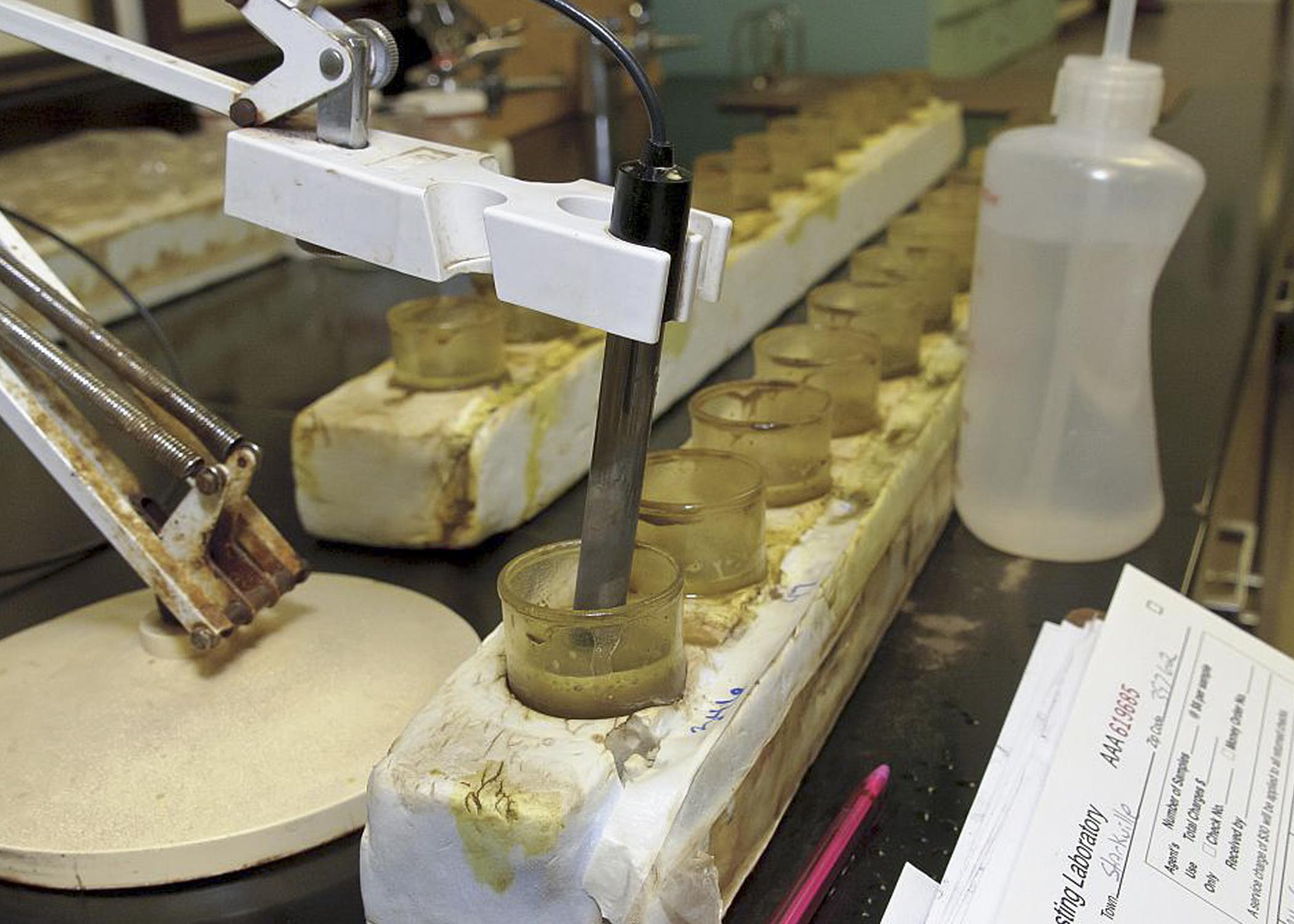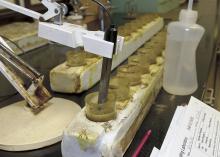Information Possibly Outdated
The information presented on this page was originally released on September 22, 2014. It may not be outdated, but please search our site for more current information. If you plan to quote or reference this information in a publication, please check with the Extension specialist or author before proceeding.
Study helps MSU scientists make best recommendations
STONEVILLE -- The thousands of dollars farmers invest in equipment, seed and labor to produce row crops, such as soybeans, cotton and corn, is wasted if they do not have quality soil.
“Everything ties back to how well the soil is maintained,” said Bobby Golden, an agronomist and researcher with the Mississippi Agricultural and Forestry Experiment Station at Stoneville. “If we didn’t have a strong, stable foundation, which is the soil, the crop yields we produce wouldn’t exist.”
Golden is one of a team of Mississippi State University researchers and specialists conducting a study to determine if soil-testing recommendations need revision. The group is examining the relationship between phosphorous, potassium and zinc and crop yields.
They also are looking at the best delivery method for zinc in corn. This nutrient can be applied to seed, in the planting furrow, on plant foliage or in combination with standard bulk applications of phosphorous and potassium.
They want to determine whether current fertilizer recommendations are still accurate for today’s crop-land. Improperly managed soil can lead to lower yields, nutrient depletion or environmental pollution issues.
“This is a proactive step on our part as researchers,” Golden said. “We want to make sure the soil test correlations and calibration methods we use in the lab are precise. Today’s higher yields, different cultivars, more irrigation and improved production methods all affect soil test calibration. It is much easier and cost-effective to maintain the soil than to try and replenish it.”
Soil testing determines the levels of certain nutrients in the soil. Once testing has revealed how far from ideal the nutrient levels are, the lab results recommend they types of fertilizer that can correct the soil’s fertility.
“A portion of the soil’s nutrients are returned to the soil after harvest and another portion is confined in the grain that is hauled off in the truck,” Golden said. “As yields increase each year, more and more nutrients are removed in the grain.”
The MSU study began in 2011. Currently phosphorous and potassium trials are conducted on producer fields that scientists know or suspect have nutrient deficiencies. Some plots receive no fertilizer, and other plots get more than would normally be applied.
It will take four to five years to get enough data for recommendations to be made.
Researchers hope to find a link between fertilization and yields in the field trials in corn and soybeans. In corn, previous years’ results from potassium application have shown as much as 70 bushels per acre yield difference depending on how much potassium was available. In soybeans, results have indicated a yield difference up to 15 to 16 bushels per acre.
“After the initial correlations, we can begin establishing optimal rates of fertilization,” Golden said. “We can then determine an appropriate fertilization rate that would grow a 95 percent average yield for each crop.”
Soil testing has a significant history in Mississippi. MSU faculty member James D. Lancaster pioneered the Lancaster method, also called the Mississippi method, a soil test process that works well in the diverse soils of the state. Most of the original work was done from the 1950s to the 1970s, said Larry Oldham, Extension soil specialist.
“The soil testing work that was done before World War II was scattered around the state, but after the war, Mississippi State really ramped up that work,” Oldham said. “A lot of people returning from the war were interested in it. The technology used in a lot of defense industry processes was transferred to civilian uses.”
Soil testing is a tool that can help everyone from leisure gardeners to commodity producers. But with shifting variables such as irrigation, fertilization and changes in plant varieties, a multi-year study helps scientists get a better picture of the soil’s health.
“Soil tests are just a snapshot at a given point and time, and that snapshot changes dozens of times during the growing season,” Oldham said. “This study can help us determine if we are adequately using our technology.”
Golden hopes to see the study continue beyond its currently funded cycle.
“In my opinion, this needs to be a continuous project,” he said. “As we gather more and more data every year, our recommendations improve and better reflect changes in current production practices.”
The study is funded through 2018 by the Mississippi Soybean Promotion Board and through 2015 by the Mississippi Corn Promotion Board.



